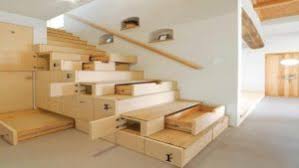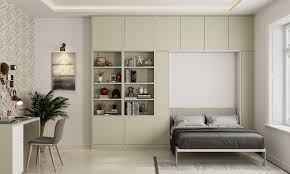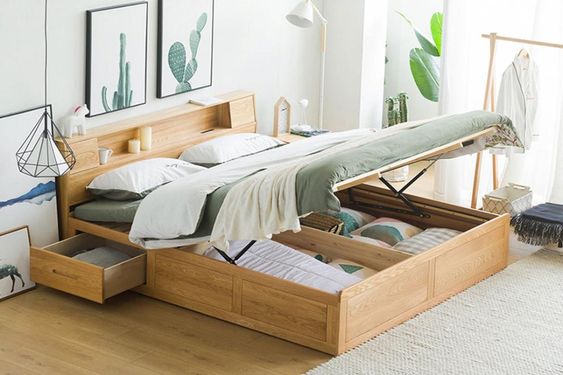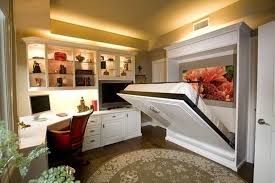- Homepage
- Innovation
- Space Saving: Smart Solutions for Modern Living
Space Saving: Smart Solutions for Modern Living
Table of Contents
ToggleSpace saving has become an essential aspect of modern living, especially with the increasing demand for urban housing and the growing trend of minimalism. In today’s fast-paced world, the ability to maximize limited spaces without compromising on comfort or functionality has transformed the way people design their homes and workplaces. By adopting creative solutions, individuals can create environments that are both aesthetically pleasing and practical.
The Importance of Space Saving

Space saving is not just about organizing or decluttering—it’s a lifestyle choice that aligns with efficiency, sustainability, and practicality. As cities grow denser, apartments and offices become smaller, making it necessary to utilize every inch effectively. Moreover, reducing clutter can improve mental health by promoting a sense of calm and focus. This approach also supports sustainable living by encouraging thoughtful consumption and reducing waste.
Key Principles of Space Saving
To implement effective space-saving techniques, it is essential to understand some basic principles. These principles guide the design and organization of spaces for maximum utility and harmony.
- Multifunctionality
Furniture or tools that serve multiple purposes are central to space saving. Items like sofa beds, extendable dining tables, or storage ottomans help reduce the need for additional furniture, making small spaces feel larger. - Vertical Utilization
Walls and ceilings are often underutilized in homes. Installing shelves, hooks, or loft beds can help optimize vertical space, leaving the floor area open for other uses. - Decluttering
The first step in saving space is decluttering. Eliminating unnecessary items makes it easier to organize and maintain a neat environment. - Customization
Custom furniture tailored to specific needs or spaces, such as built-in wardrobes or under-stair storage, provides efficient solutions while seamlessly blending into the design.
Space Saving in Urban Homes
Urban homes face unique challenges due to limited square footage. Creative solutions are essential for ensuring that these spaces remain functional and comfortable.
- Studio Apartment Solutions
In studio apartments, zoning becomes crucial. Dividers, rugs, or strategically placed furniture can help separate living areas without consuming additional space. - Compact Kitchens
Space-saving kitchen designs often include wall-mounted racks, magnetic strips for knives, and pull-out pantry shelves to maximize storage without overcrowding the room. - Bedroom Organization
Bedrooms in small homes benefit from under-bed storage, foldable desks, and floating shelves. A loft bed can create additional floor space, ideal for a desk or a seating area.
Space Saving in Offices

With remote work on the rise, efficient home offices and coworking spaces have gained importance. Space-saving strategies in offices focus on creating ergonomic and productive work environments.
- Flexible Furniture
Desks with built-in storage or foldable workstations are popular choices for compact offices. Modular furniture that can be rearranged based on needs offers versatility. - Cable Management
Tangled cables not only take up space but also create a cluttered appearance. Using cable organizers or installing wall-mounted chargers helps keep workspaces tidy. - Smart Technology
Incorporating smart devices like wireless printers or compact desktops can save significant space, leaving more room for other essentials.
Role of Technology in Space Saving
Technological advancements have paved the way for innovative space-saving solutions. Smart home systems, for instance, allow users to control lighting, heating, and appliances remotely, reducing the wdbos need for multiple devices. Compact gadgets, such as foldable smartphones and tablets, also reflect the growing trend of downsizing without sacrificing functionality.
Space Saving in Outdoor Areas
Outdoor spaces, such as balconies or small gardens, can also benefit from space-saving techniques. Vertical gardening, foldable furniture, and stackable planters are excellent options for maximizing the utility of limited outdoor areas. Additionally, creating storage benches or incorporating hidden compartments can keep outdoor spaces organized.
Sustainability and Space Saving
Space saving and sustainability go hand in hand. By minimizing consumption and making thoughtful choices about furniture and décor, individuals contribute to a more sustainable future. Using recycled materials, opting for energy-efficient appliances, and repurposing items are just a few ways to align space saving with environmental responsibility.
Psychological Benefits of Space Saving

A well-organized space can significantly impact mental health. Cluttered environments are often linked to stress and anxiety, while organized spaces promote relaxation and productivity. By adopting space-saving techniques, individuals can create a more peaceful and enjoyable living environment.
Creative Ideas for Space Saving
- Hidden Storage
Concealed storage spaces, such as drawers under stairs or cabinets integrated into walls, are ideal for keeping items out of sight. - Foldable and Stackable Items
Furniture that folds away when not in use, like Murphy beds or collapsible dining tables, is perfect for small homes. - Overhead Racks
Ceiling-mounted racks or hanging systems in kitchens or garages can free up ground space while providing accessible storage. - Compact Appliances
Small appliances designed for tight spaces, such as mini washing machines or compact refrigerators, help save both space and energy.
Future Trends in Space Saving
The concept of space saving continues to evolve with advancements in design and technology. Future trends may include modular living units, robotic furniture, and AI-driven interior designs that adapt to the user’s needs. These innovations aim to further optimize small spaces while maintaining comfort and functionality.
Conclusion
Space saving is more than just a trend—it’s a necessity in today’s urbanized and fast-paced world. By adopting thoughtful designs, multifunctional furniture, and efficient organization techniques, individuals can create spaces that are not only functional but also visually appealing. Whether it’s a small apartment, a home office, or an outdoor garden, the principles of space saving can transform any area into a harmonious and efficient living space. With the right approach, saving space becomes an opportunity to embrace simplicity, sustainability, and innovation.











